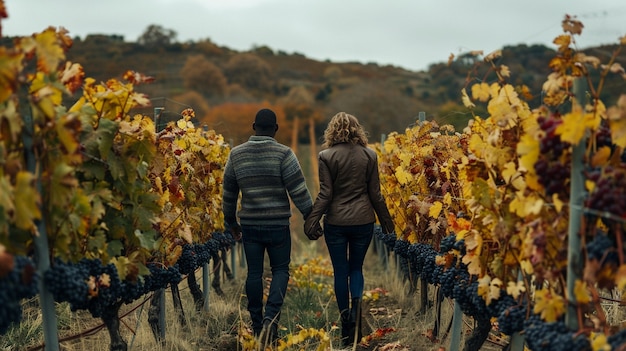
While wine tasting in Luxembourg’s Moselle region, I noticed the statue of St. Willibrord, who is considered the protector of the grapes here. His three raised fingers symbolize the idea that drinking three glasses of wine a day is beneficial.
The local wine growers believe that a combination of saintly protection and nearly 2000 years of winemaking expertise ensures the success of their wines. The tradition and dedication of family businesses are as constant as the Moselle River that flows through the vineyards.
If you’re into wine, you might know about the Moselle River, which forms the border between Luxembourg and Germany. The region is known for grapes like Pinot Blanc, Pinot Gris, Riesling, Gewurztraminer, Chardonnay, and the more unique Elbling, Rivaner, and Auxerrois. However, Luxembourgeois wine is not widely known because 66% of it is sold within Northern France, Germany, and Belgium.
Our wine tasting tour began at the wine museum in Ehnen, where we explored old stone buildings and barns filled with historical agricultural tools. We saw a lady mannequin dressed in traditional attire, ready to collect grapes in her basket. Outside, different grape varieties were planted, and an old helicopter used for crop spraying was on display.
At Domaines Vinsmoselle, we met Stephen De Roy, an expert who guided us through the winery. Founded in 1921, Domaines Vinsmoselle includes over 300 winemakers who sell their grapes to produce diverse wines. The vineyards, stretching over 42 kilometers along the Moselle, mainly produce white wines due to the mild microclimate and evenly distributed rainfall.
During our tasting, we learned about the differences between a Pinot Noir aged in oak barrels and one aged in stainless steel tanks. Stephen humorously remarked that if he wanted to taste oak, he’d go to the forest, not his wine. A specialty of the region is the sparkling Cremant, a delightful alternative to Prosecco. We also tried Tam Tam, a fresh grape juice made from the finest grapes, with no fermentation to mask any imperfections.
Stephen’s favorite wine is a 2009 Riesling from the Charte Schengen prestige brand, made from grapes of vines over 30 years old with deep roots. These grapes come from twelve selected growers near the winery, including four from France, Luxembourg, and Germany each. This cooperation reminds us of Luxembourg’s role in founding NATO and the Schengen Agreement.
Although we didn’t visit the European Museum in Schengen, we saw the town from a boat trip on the Moselle River from Remich. That evening, we enjoyed a 2013 Riesling from Charte Schengen at a gourmet barbecue at the Pundel winery. Known as the king of wines in Luxembourg, it had a balanced bouquet of citrus fruits, apricot, apple, peach, pear, lime, eucalyptus, and even a hint of petrol.
The Pundel winery, a modern glass building, offered a fabulous view of the vineyards from its rooftop terrace. Unfortunately, due to rain, we had to dine indoors but still enjoyed a delicious meal of steak and seafood brochettes.
Our tour concluded with the Grape and Wine festival in Grevenmacher, where we enjoyed rock music, local wines, and a parade led by the wine festival princess. The evening ended with a spectacular firework display over the Moselle River.
As we left the Moselle Valley, I felt ready to embrace St. Willibrord’s motto of three glasses a day for good health. With a glass of Luxembourg’s sparkling Cremant or vintage Riesling in hand, I’ll happily toast to that!